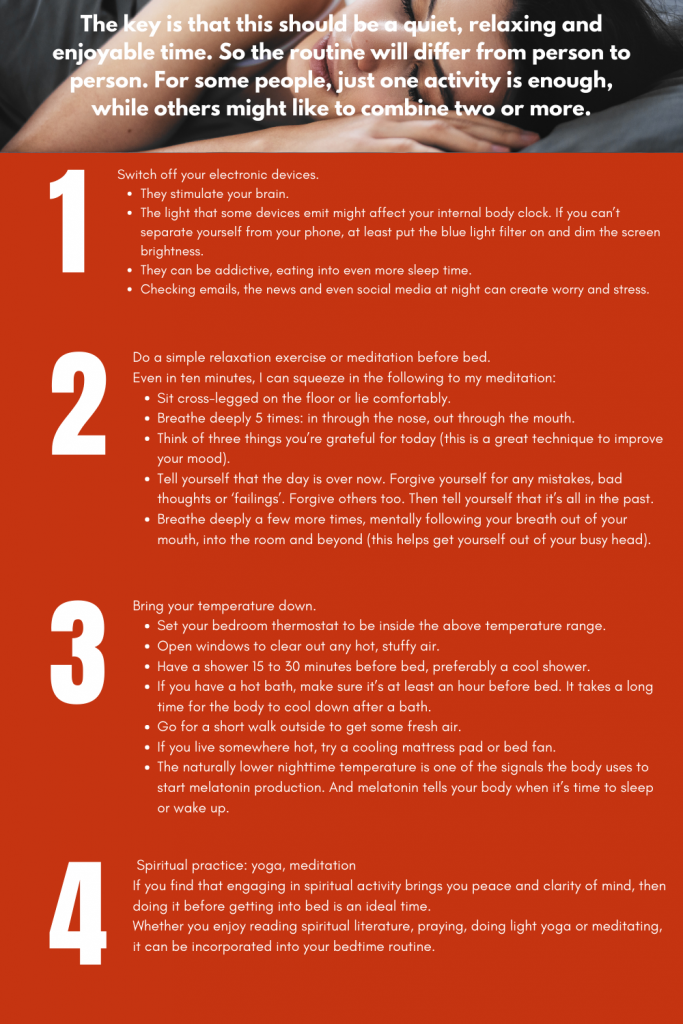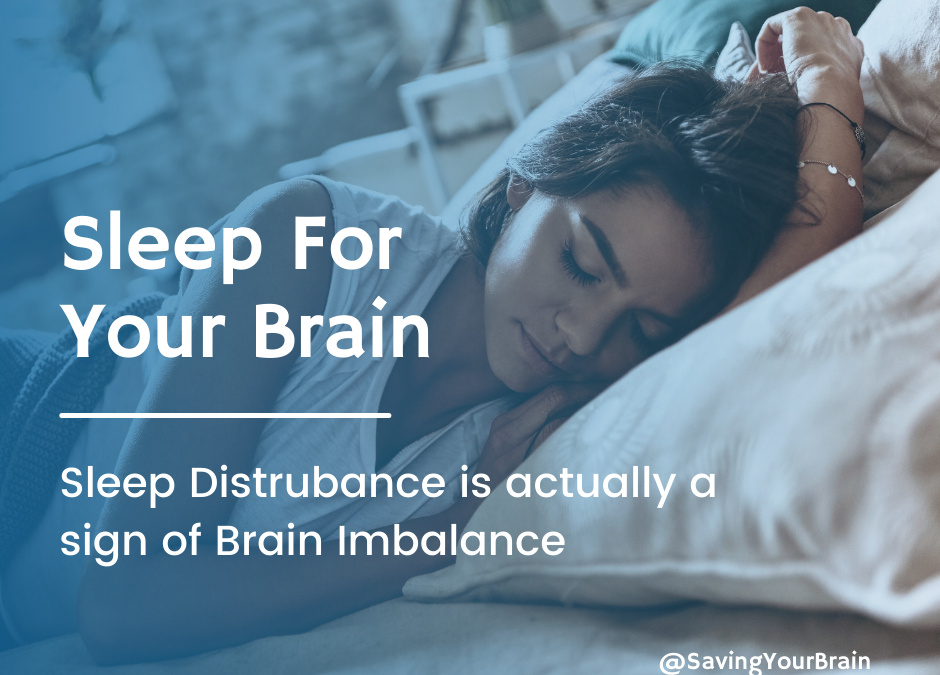As the author of Amazon Best Seller book – Saving Your Brain, Dr. Kelly Miller explains how the letters in the word S-A-V-I-N-G Y-O-U-R B-R-A-I-N is an acronym, each representing an important area for brain health. S stands for Sleep and is perhaps, the most important activity for the brain in order to function at its optimal level.
Distrubances in sleep is a sign of brain imbalance. We now know that it is very important to go through the 5 stages of sleep every night and we need to cycle through them to get the most benefit. “
Dr. Kelly Miller, NMD
What are the stages of sleep?
There’s 5 different cycles and we need to go through them about 5 times each night – accumulating 90 minutes in each cycle. During the Delta sleep cycle, our brain is actually shrinking, dumping out by products like wringing out a dirty sponge in your sink. Delta sleep is a critical component of the sleep cycles for the rejuvenation of the body.
Five stages of sleep:
Stage 1: In stage 1, we enter the transition state as we fall asleep and begin our first “sleep cycle”. This light sleep stage lasts up to 2-5 minutes. If sleep remains uninterrupted it will progress to stage 2 sleep. Stage 1 gives 2-5 % of normal sleep
Stage 2: Stage 2 is much deeper sleep than stage 1. The brain waves go into theta mode, and lead into stages 3 and 4 in around 10-20 minutes. Stage 2 sleep occupies approximately 50-65% of our sleep time, lasting 15-30 minutes in each cycle. During the second part of the night we spend more and more time alternating between stages 2 & REM sleep.
Stage 3: Stage 3 is much deeper sleep than stage 2. The muscles are relaxed, heart rate slows down, blood pressure falls, and breathing is steady and even. Brain activity slows down noticeably from the theta pattern of stage 2 to a much slower rhythm of 1 to 2 cycles per second called delta sleep system, and the height, or amplitude, of the waves increases.
Stage 4: Stage 4 is deepest sleep of all, during which a sleeping person is ‘dead to the world’. Blood pressure and heart rate change and the sleeper’s brain heats up. Delta sleep system is characterized by very high voltage slow brain waves.
Stage 5 REM (rapid eye movement): The first REM period lasts only about ten minutes. After that, the sleeper goes back into a deep stage 4 sleep or delta sleep system. Again, the sleeper returns into a REM stage after a short period, and cycles through REM and stage 4 continue until the sleeper wakes up. Along with this, our brain becomes so activated that we start to fantasize and dream. Our eyes move as in alertness, and in relation to what we are dreaming. This paradoxical state will last 10-20 minutes and then we “fall” back down into stage 2 again.
This is the end of a sleep cycle and then it all starts over again. As the night progresses we slowly lose our delta sleep, and replace it with longer and longer periods of alternating stage 2 and REM sleep. By the final sleep cycle of the night, we spend approximately half our sleep time in stage 2 and half in REM.
Contrary to popular belief, it is delta sleep that is the “deepest” stage of sleep (not REM) and the most soothing. It is delta sleep system that a sleep deprived person’s brain desires the first and foremost. In children, delta sleep system can occupy up to 40% of all sleep time.
Why is Sleep Important?
To Keep the Nervous System Functioning
Sleep appears necessary for our nervous systems to work properly. Too little sleep leaves us drowsy and unable to concentrate the next day. It also leads to impaired memory and physical performance and reduced ability to carry out math calculations. If sleep deprivation continues, mood swings and hallucinations may develop. Some experts believe sleep gives neurons used while we are awake a chance to shut down and repair themselves. Without sleep, neurons may become so depleted in energy or so polluted with byproducts of normal cellular activities that they begin to malfunction. Sleep also may give the brain a chance to exercise important neuronal connections that might otherwise deteriorate from lack of activity.
To Keep Us Growing
Deep sleep helps us with the release of the growth hormone in children and young adults. Many of the body’s cells also show increased production and reduced breakdown of proteins during deep sleep. Since proteins are the building blocks needed for cell growth and for repair of damage from factors like stress and ultraviolet rays, deep sleep may truly be “beauty sleep.”
Activity in parts of the brain that control emotions, decision-making processes, and social interactions is drastically reduced during deep sleep, suggesting that this type of sleep may help people maintain optimal emotional and social functioning while they are awake. A study in rats also showed that certain nerve-signaling patterns which the rats generated during the day were repeated during deep sleep. This pattern repetition may help encode memories and improve learning.
REM sleep begins with signals from an area at the base of the brain called the pons. These signals travel to a brain region called the thalamus, which relays them to the cerebral cortex – the outer layer of the brain that is responsible for learning, thinking, and organizing information. The pons also sends signals that shut off neurons in the spinal cord, causing temporary paralysis of the limb muscles. If something interferes with this paralysis, people will begin to physically “act out” their dreams – a rare, dangerous problem called REM sleep behavior disorder. A person dreaming about a ball game, for example, may run headlong into furniture or blindly strike someone sleeping nearby while trying to catch a ball in the dream.
REM sleep stimulates the brain regions used in learning. This may be important for normal brain development during infancy, which would explain why infants spend much more time in REM sleep than adults. Like deep sleep, REM sleep is associated with increased production of proteins. One study found that REM sleep affects learning of certain mental skills. People taught a skill and then deprived of non-REM sleep could recall what they had learned after sleeping, while people deprived of REM sleep could not.
What are some Sleep Disorders?
Sleep Problems and Mental Disorders
Sleeping problems occur in almost all people with mental disorders, including those with depression and schizophrenia. People with depression, for example, often awaken in the early hours of the morning and find themselves unable to get back to sleep. The amount of sleep a person gets also strongly influences the symptoms of mental disorders. Sleep deprivation is an effective therapy for people with certain types of depression, while it can actually cause depression in other people. Extreme sleep deprivation can lead to a seemingly psychotic state of paranoia and hallucinations in otherwise healthy people, and disrupted sleep can trigger episodes of mania (agitation and hyperactivity) in people with manic depression.
Sleeping problems are common in many other disorders, including Alzheimer’s disease, stroke, cancer, and head injury. These sleeping problems may arise from changes in the brain regions and neurotransmitters that control sleep, or from the drugs used to control symptoms of other disorders. In patients who are hospitalized or who receive round-the-clock care, treatment schedules or hospital routines also may disrupt sleep. Once sleeping problems develop, they can add to a person’s impairment and cause confusion, frustration, or depression. Patients who are unable to sleep also notice pain more and may increase their requests for pain medication. Better management of sleeping problems in people who have other disorders could improve these patients’ health and quality of life.
Chronic Long-term Sleep Disorders
At least 40 million Americans each year suffer from chronic, long-term sleep disorders and an additional 20 million experience occasional sleeping problems. These disorders and the resulting sleep deprivation interfere with work, driving, and social activities. They also account for an estimated $16 billion in medical costs each year, while the indirect costs due to lost productivity and other factors are probably much greater. Doctors have described more than 70 sleep disorders, most of which can be managed effectively once they are correctly diagnosed. Some of the most common sleep disorders include insomnia, sleep apnea, restless legs syndrome, and narcolepsy.
Insomnia
Are you suffering from Insomnia? This problem can result from stress, jet lag and other circadian rhythm problems, diet, or many other factors. Insomnia almost always affects job performance and well-being the next day. About 60 million Americans a year have insomnia frequently or for extended periods of time, which leads to even more serious sleep deficits. Insomnia tends to increase with age and affects about 40 percent of women and 30 percent of men. It is often the major disabling symptom of an underlying medical disorder. For short-term insomnia, doctors may prescribe sleeping pills. Sleeping pills often stop working after several weeks of nightly use, however, and long-term use can actually interfere with good sleep. Mild insomnia often can be prevented or cured by practicing mindful sleep habits .

Download our helpful Sleep Routine Tip Sheet here for some mindful activities to help improve your sleep.
Are you ready to get some serious sleep?
Connect with Dr. Kelly Miller through our secure telehealth portal. Simply fill in our contact form with your name and contact number to create your own Healthie account and request a FREE 15-minute consultation to get started.
Click on the button to take the 3-minute questionnaire to help Dr. Kelly Miller better understand your current sleep issues. You will receive your results within 24-48 hours and start your journey towards better sleep and optimizing your brain health.

